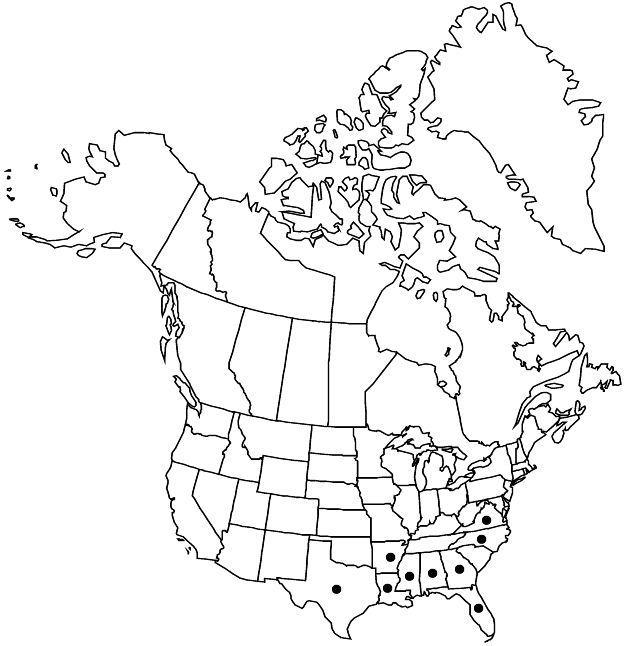Difference between revisions of "Hibiscus coccineus"
Fl. Carol., 177. 1788.
FNA>Volume Importer |
imported>Volume Importer |
||
| (2 intermediate revisions by 2 users not shown) | |||
| Line 57: | Line 57: | ||
|publication year=1788 | |publication year=1788 | ||
|special status=Endemic | |special status=Endemic | ||
| − | |source xml=https:// | + | |source xml=https://bitbucket.org/aafc-mbb/fna-data-curation/src/2e0870ddd59836b60bcf96646a41e87ea5a5943a/coarse_grained_fna_xml/V6/V6_476.xml |
|subfamily=Malvaceae subfam. Malvoideae | |subfamily=Malvaceae subfam. Malvoideae | ||
|genus=Hibiscus | |genus=Hibiscus | ||
Latest revision as of 22:21, 5 November 2020
Herbs, perennial, to 3(–3.5) m, herbage glabrous throughout. Stems glaucous. Leaves: stipules caducous, linear-subulate, 1–3 mm; petiole 1/3 to equaling blade; blade orbiculate to transversely elliptic, deeply palmately 3–5-lobed, 10–19 × 13–25 cm, base cordate, segments linear-lanceolate, margins remotely, unevenly serrate, apices acuminate, surfaces glabrous, nectary absent. Inflorescences solitary flowers in axils of distal leaves. Pedicels jointed distally, 3–14 cm, 1/3–1 3/4 petioles; involucellar bractlets 9–15, linear-subulate, 2.5–4 cm, not ciliate. Flowers showy, horizontal or ascending; calyx divided 3/4 length, rotate, 3.5–6 cm, larger in and longer than fruit, lobes narrowly triangular, apices acute to acuminate, nectaries absent; corolla rotate, petals not overlapping, bright red, narrowly spatulate-obovate, (6–)7.5–10 × 2.5–5.5 cm, minutely hairy abaxially where exposed in bud; staminal column straight, exserted, red, pink to white basally, 6.5–7 cm, bearing filaments in distal 1/3, free portion of filaments not secund, 4–8 mm; pollen dull yellow to dull red; styles red, 5–9 mm; stigmas red. Capsules brown, ovoid to globose, 2.8–3.5 cm, apex acute, apiculate, glabrous. Seeds brown, reniform-globose, 2.5–3.8 mm, hairy, hairs often in lines, brownish to reddish. 2n = 38.
Phenology: Flowering late May–early Aug.
Habitat: Riparian and other freshwater marshes, ditches, swamps
Elevation: 0–40 m
Distribution

Ala., Ark., Fla., Ga., La., Miss., N.C., Tex., Va.
Discussion
Except for the Florida records and two very old ones from Georgia, the distribution of Hibiscus coccineus given here is based on relatively recent reports and almost certainly represents escapes from cultivation rather than a natural distribution.
A rare, white-flowered form is known from southern Florida and is now in the horticultural trade. Petal color in Hibiscus coccineus has been shown to be under the control of a simple diallelic locus in which red is completely dominant over white (L. A. Gettys 2012).
In 1871, A. W. Chapman found plants of Hibiscus coccineus in eastern Florida that bore distinctive, shallowly-lobed leaves and his specimens form the basis for H. semilobatus. No extant populations of this variant have been rediscovered.
Selected References
None.